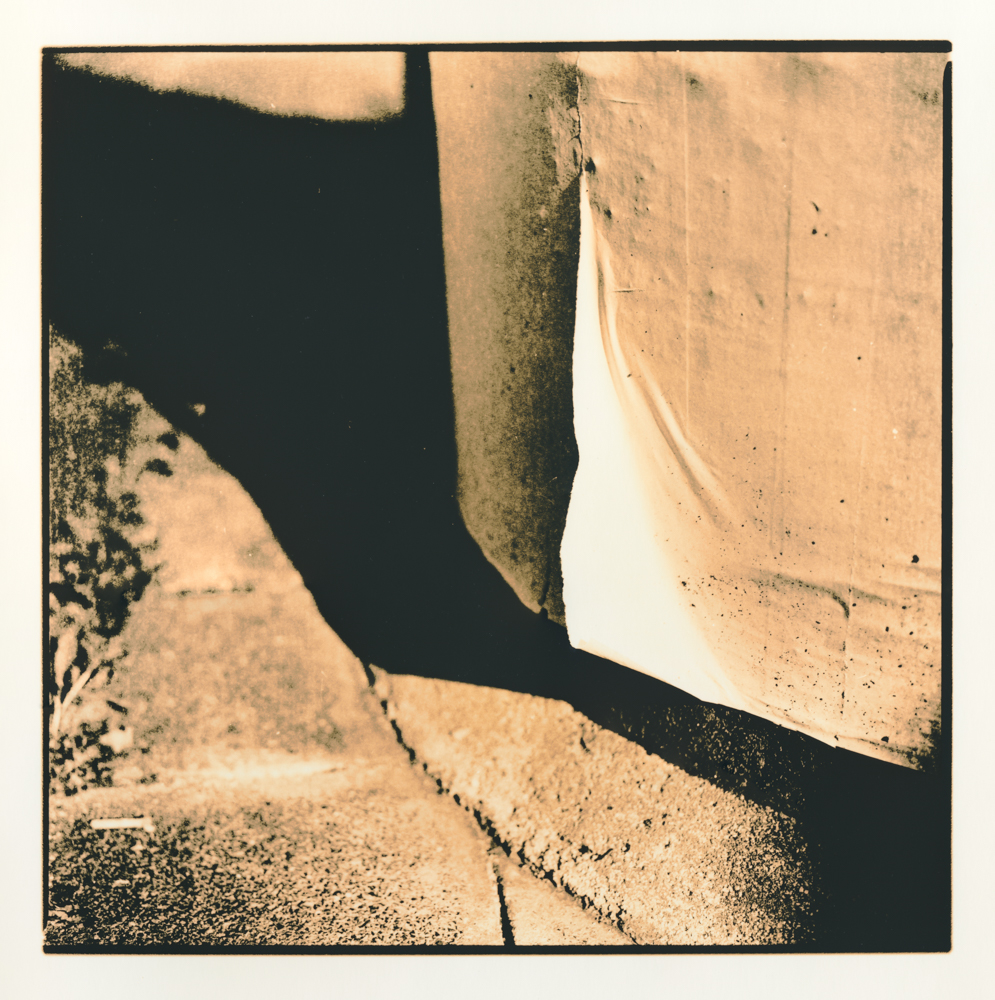I discovered about lith printing with the fascinating portraits done by Anton Corbijn. His book “Star Trak” struck me by the look of the pictures. Of course a good portrait is much more than the technique, so don’t get me wrong here - I loved the portraits and I loved the look of them, hence I wanted to learn how to get that look. After some frustrating attempts with (what I didn’t know back then) the wrong papers I attended a workshop by Wolfgang Moersch and was hooked. Wonderful workshop and teacher. In my view lith printing was a much more exciting workflow of getting the print in the darkroom. And that look: the tones, the blacks, areas of peppercorn grain side by side with sharp and grainless parts.
The picture above is not one of my best, but it demonstrates nicely how different the parts in a picture may be rendered: deep blacks, yellowish to peachy areas with different grain structures, the bright parts having less color and less grain. The nice part is when the blacks start crawling from a dark area to other areas, when black grain seems to swarm out, slightly chaotic, starting slowly and then accelerating, as if the blacks were an organism taking over part of the picture.
If you want to know more about the chemical process behind that so-called infectious development, please consult the experts: Wolfgang Moersch has some great articles about lith printing for free on his web page. And definitely try to get the books of Tim Rudman. Here I want to talk about the specialty of that technique from a printer’s perspective. And I hope that we’ll host some more blog posts about this topic in the next weeks or months.
I like that the exposure of the paper is just the foreplay. The paper gets highly overexposed, contrast control during exposure is not that important: contrast can be controlled in the trays (of course, your technique may vary here): The real magic happens standing at the trays and making the print, which takes about 6-14 minutes – it is an adventure in itself. You have to stay focused and you have to find the decisive moment where the print reaches its climax. As soon as you see the first blacks kicking in, you have to watch carefully how they emerge and take over the image. You have to find the right balance of the bright parts slowly emerging from the white paper and the black parts taking more and more share of the picture.
The developer keeps accelerating (in terms of contrast) for quite some time till it gets exhausted. So if you plan to do a series of similar prints, replenishment is key. But even with that, it’s nearly impossible to get two identical prints.
If you don’t replenish and just work with the changing behavior of the developer, each sheet of paper brings new excitement, shows new behavior of the blacks. And if you are in a community darkroom printing with 2 other lith guys, you watch them handling that behavior and you see their outcomes, you see and learn what’s possible at that moment. Then, when you see the developer being at the right point, you enter the friendly competition and try to get the best rendering of the idea of the print you had in your head.
It doesn’t work each time, it can be frustrating as well. Perhaps you need several attempts with different dilutions, different strength of the developer or different papers. But when you see your master print emerge, when you feel that this might be the one and when you’re watching for a long final minute how the blacks keep accelerating, the strong excitement more than pays for all the effort.
Sounds like randomness to create artsy looking pictures of boring things?
You might see it that way, but I’ve got another view. I do enter the darkroom with a clear concept of the best print in mind. From that on I welcome improvisation – the concept serves as an important starting point to find the best possible rendering in a creative process, the creative process of that lith printing session dealing with the concept. Lith printing frees up the printing process for me. And I still dig that look. That lith look and the printing process to get there keep fascinating me.
If you’ve never done it, give it a try. For examples, go search on Instagram for #lithprint or have a look at the work of masters like Wolfgang Moersch, Tim Rudman, Mike Crawford or Guillaume Zuili - or, of course, Anton Corbijn.
Remark from the author: This article was updated on June 23rd, 2022. I’ve added another name of a great and still very active lith printer and photographer, Mike Crawford. I came to know him during the last year. He does amazing projects like Obsolete & Discontinued.

